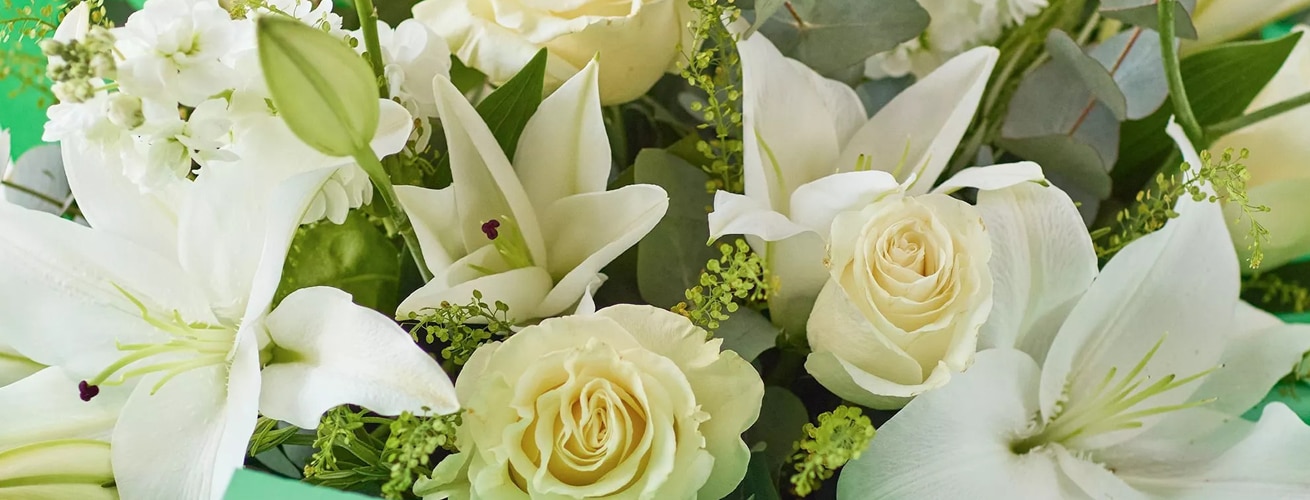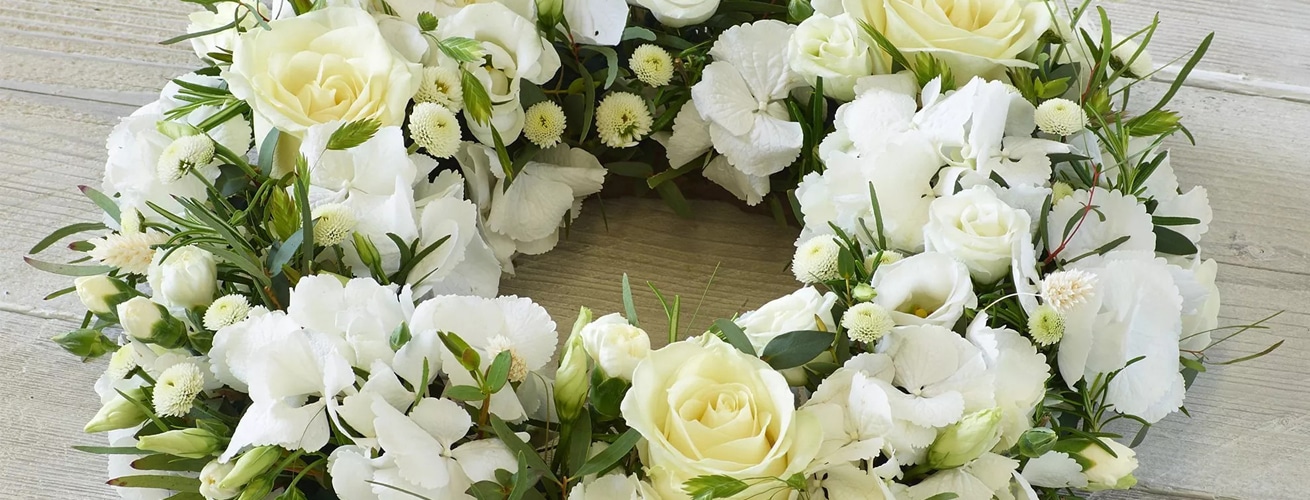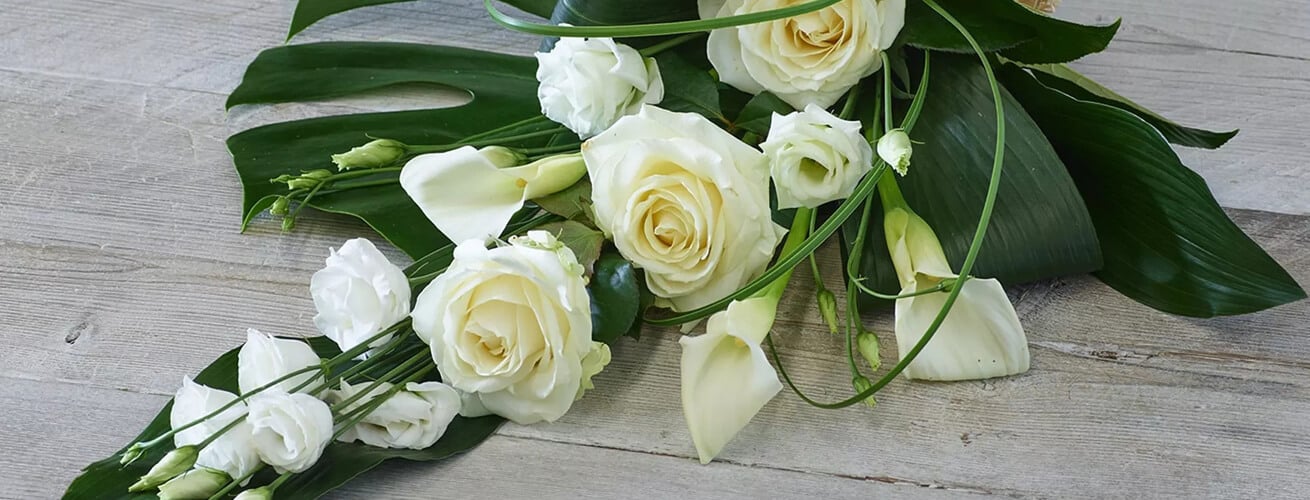Understanding Sympathy and Funeral Flowers Etiquette
Nothing feels easy when a loved one suffers a loss. You want to comfort and support them, but knowing what to say or do during such a difficult time can feel impossible. Sending sympathy flowers is a lovely way of expressing your sympathies and letting them know they’re in your thoughts. But did you know there is, in fact, a recognised etiquette for sending sympathy flowers?
Don’t worry; this etiquette isn’t there to trip you up but exists to guide you in choosing the best condolence flowers for your grieving loved one. From understanding the difference between sympathy and funeral flowers to knowing when and where to send your floral gift, we’re here to support you in navigating the dos and don’ts of sending sympathy blooms.
Send Flowers With Comfort & Care ?️
Show them you care with sympathy flowers—elegant, hand-crafted bouquets delivered directly to their door.
What is the Difference Between Sympathy Flowers and Funeral Flowers?
At Williamson’s My Florist, our customers often refer to sympathy and funeral flowers interchangeably. Of course, we understand why – both are sent to pay respects after someone’s death. However, it’s crucial to grasp the distinct purposes of these two types of flowers to ensure you make the most appropriate choice for your grieving loved one.
Sympathy Flowers
Sympathy arrangements and floral bouquets are traditionally sent directly to the deceased’s family home. They tend to be smaller than funeral flower arrangements, as they’re designed to be displayed in the home. Considering many people may send condolence flowers following a passing, we recommend selecting a more intimate floral display to convey your compassion without overwhelming the recipient.
Funeral Flowers
Flowers for funerals, on the other hand, are displayed during the funeral service itself. Typically much larger, funeral wreaths, coffin sprays, and floral tributes should be sent directly to the funeral home to show respect alongside the casket.

When Should You Send Sympathy Flowers?
There’s no hard-and-fast rule for exactly when to send bereavement flowers, but it’s best to send them as soon as possible. At Williamson’s, we offer next-day and same-day flower delivery, so you can rest assured your thoughtful gift will arrive promptly. Of course, you can choose to send sympathy flowers at a later date to let the family know they remain in your thoughts following the funeral.
However, the etiquette for sending funeral flowers is quite different. Funeral flowers should arrive in time for the memorial, ideally on the day of the service, so that the funeral home can organise a fitting display.
You should also consider your relationship to the deceased, as funeral flower etiquette for immediate family will differ from that for friends and acquaintances; while ornate tributes are meaningful gestures for a family member or close friend, a simple bouquet would be more appropriate for others.

What to Write on Sympathy Flowers?
Sending sympathy messages with flowers helps show you care. Don’t worry if you feel at a loss for words, as long as your message feels genuine and heartfelt, they’re sure to be grateful. Whether you keep things short and write ‘with deepest sympathy’ or choose to share personal memories of the departed, your words of support will be a great comfort during this sensitive time.
Struggling for inspiration? Here are a few starting points to help you craft a compassionate sympathy message:
- My thoughts are with you during this difficult time.
- Know that you are loved, and they will be deeply missed.
- Wishing you peace and comfort in the days to come.
- I’m here for anything you need.
All our sympathy bouquets and arrangements come with a complimentary gift card with space for a short message.
Sympathy Flowers Etiquette for Different Faiths
Sending sympathy flower etiquette differs between religions and cultures, with floral tokens a welcome gesture of sympathy in some religions, but not in others. Certain flower types and colours have different symbolic meanings across faiths, so carefully choosing sympathy flowers is essential to show your respect.
Here are some important distinctions to keep in mind:
- Christianity—Sending flowers to a funeral or a grieving loved one is a common practice in Roman Catholic and Protestant denominations, with certain branches preferring simple, plain blooms. If the deceased’s family is Mormon, you should avoid funeral crosses, but other flower tributes are welcome.
- Judaism—Giving flowers for sympathy within the Jewish faith is not commonplace – a shiva basket of food is the customary condolence gift.
- Hinduism—Similarly, sending sympathy flowers or taking flowers to a Hindu funeral is not customary, as flowers are more commonly associated with celebrations. Condolence gift baskets of food and fruit are more appropriate markers of respect.
- Islam—Flowers are typically absent from Islamic funerals as well, though if the family is open to receiving them, ensure they are kept simple and elegant.
- Sikhism—Flowers are not considered part of the Sikh funeral rites, either. However, if the family accepts floral gifts, white and orange chrysanthemums are the most traditional choice.
- Buddhism—For Buddhist remembrances, you can send white flowers but should avoid red flowers, as this colour is traditionally associated with happiness and prosperity.
If in doubt, check with someone close to the bereaved family to determine if floral sympathy gifts are appropriate – you don’t offend during a sensitive period.

Popular Types of Sympathy Flowers
Choosing what flowers to send when someone dies can be tricky. You could opt for the departed’s favourite colour or type of flower, or stick to traditional mourning blooms. Unsure where to start? Here are some of the best sympathy flowers for grief.
Lilies
White lilies are some of the most traditional blooms for funerals and sympathy. Symbolic of purity and elegance, white lilies are simple, elegant, and meaningful, making them a popular choice for sympathy bouquets.
Carnations
Carnations are also very popular funeral flowers and sympathy gifts, with white carnations representing purity and innocence and pink petals symbolising remembrance.
Chrysanthemums
Representative of both mourning and hope, chrysanthemums make a beautiful memorialising tribute to a dearly departed and offer comfort and support to the grieving family.
Roses
Light-coloured and white roses often feature in sympathy bouquets for their unmistakable beauty and links to purity. Remember to follow sympathy and funeral flowers etiquette and avoid bright roses, which are symbolic of romantic love and joy.
When considering what colour flowers to send for sympathy, we always recommend selecting light, neutral tones. Unless you are sure a cheerful colour will lift their spirits, avoiding anything too bright and colourful is best.
Williamson’s My Florist Sympathy Flower Arrangements
If you’re in need of sympathy or funeral flower ideas, contact us today. Our specialist team of expert florists is on hand to help craft a bespoke sympathy bouquet or floral arrangement that shows how much you care. Each flower is hand-selected for freshness and carefully arranged to express your condolences beautifully. So if you need a helping hand following a bereavement, let us take care of things.
Other News

Is there any time of year more captivating than Christmas? The charm of frosty mornings,...

Flowers can evoke so many different feelings and sentiments without saying a word. From classic...

The leaves are changing, the nights are drawing in, and there’s a whiff of pumpkin...

Flowers are the perfect gift for celebrating special occasions, and what occasion is more worthy...
